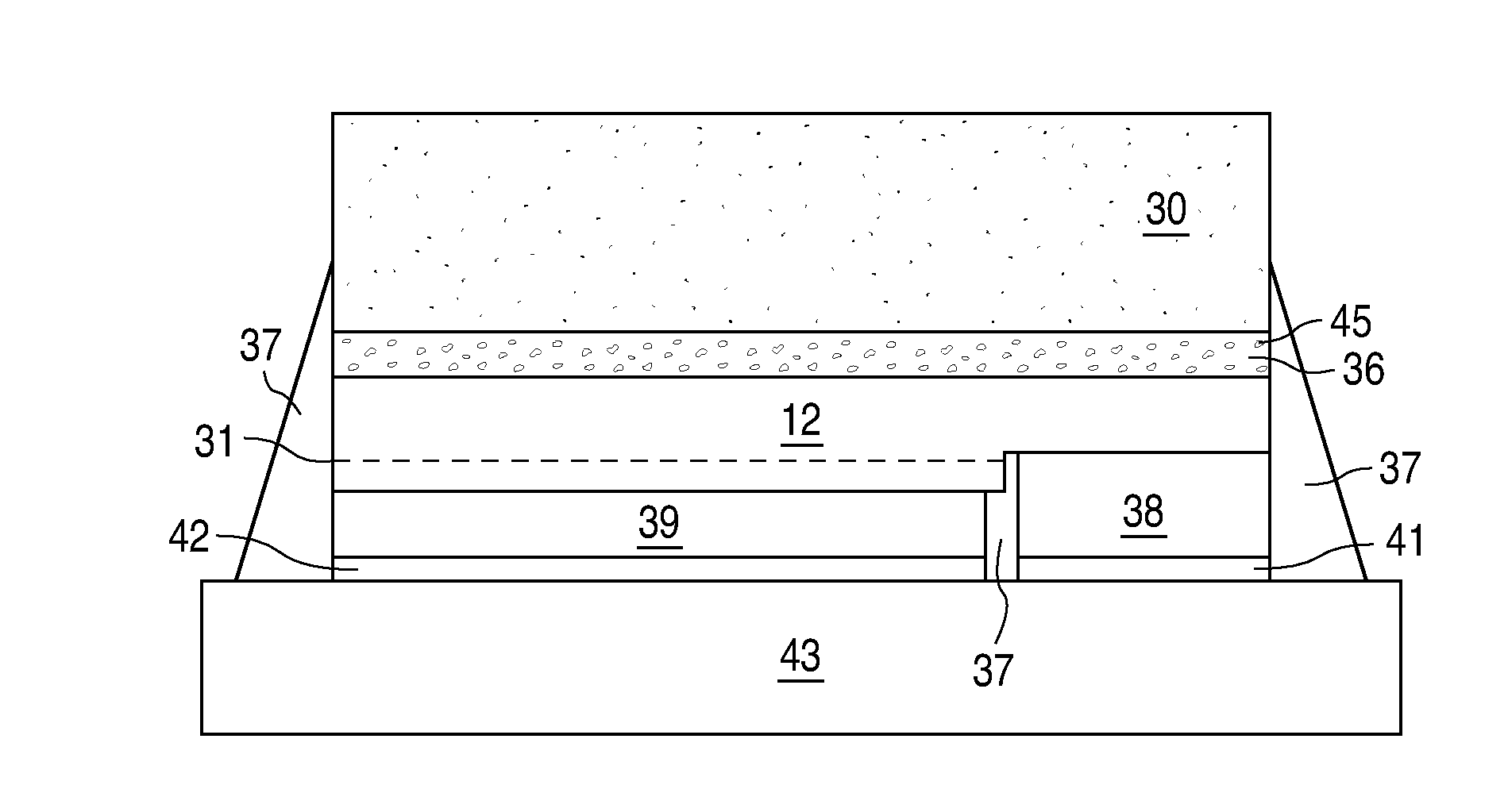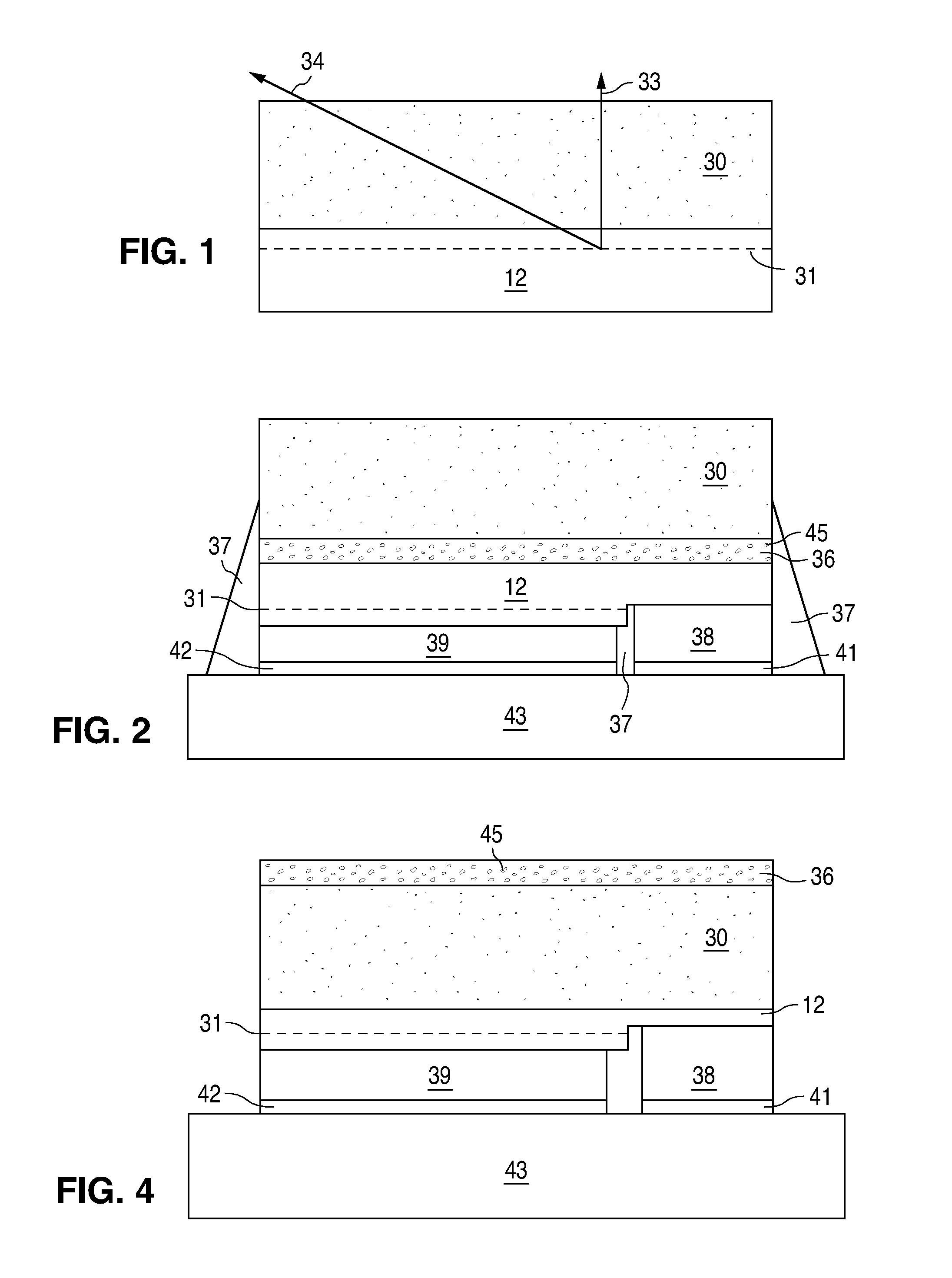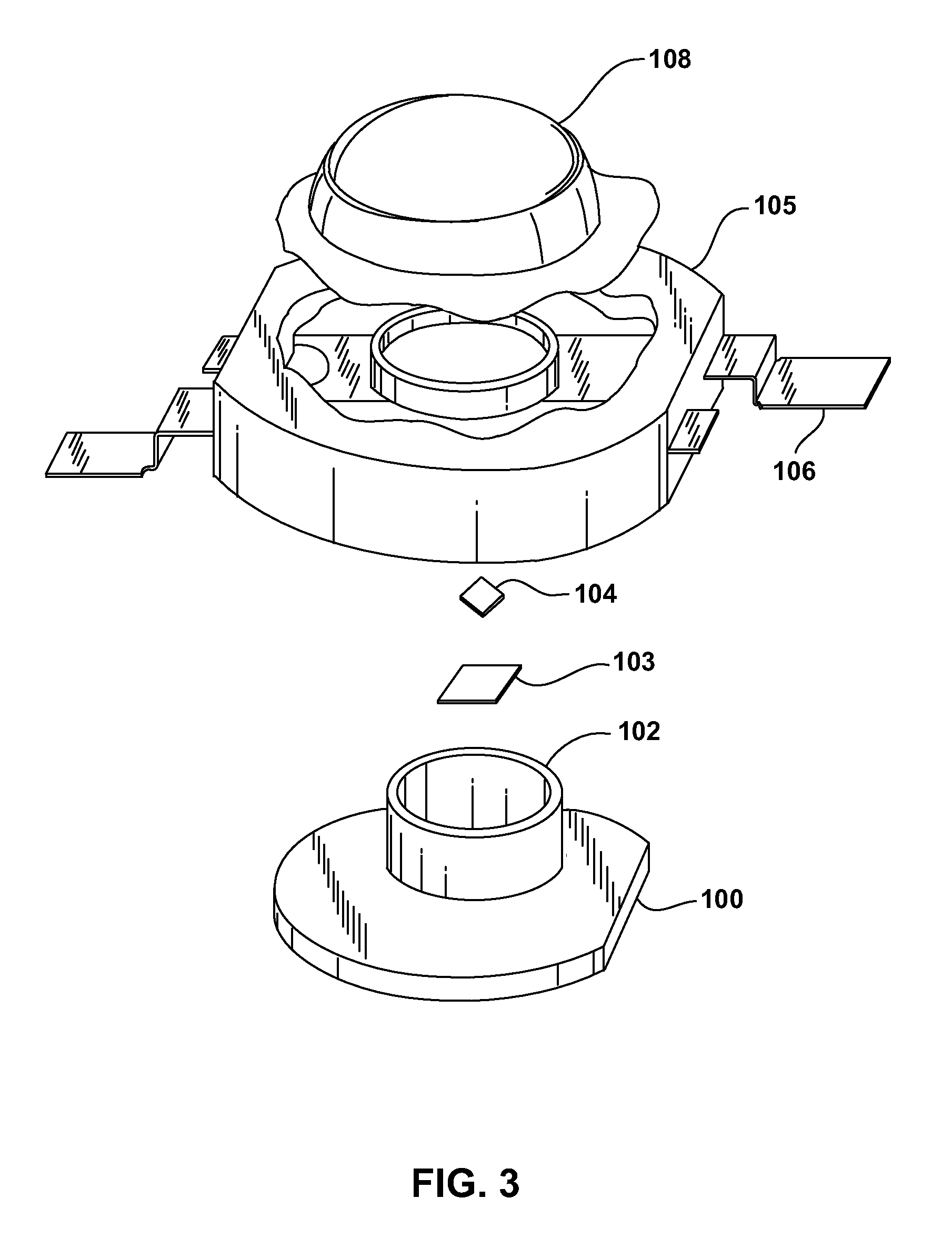Light Emitting Device Including Luminescent Ceramic and Light-Scattering Material
- Summary
- Abstract
- Description
- Claims
- Application Information
AI Technical Summary
Benefits of technology
Problems solved by technology
Method used
Image
Examples
Embodiment Construction
[0013]Luminescent ceramic layers may be made by heating a conventional powder phosphor under pressure until the surface of the phosphor particles begin to soften and melt. The partially melted particles stick together to form a rigid agglomerate of particles. Unlike a thin film, which optically behaves as a single, large phosphor particle with no optical discontinuities, a luminescent ceramic behaves as tightly packed individual phosphor particles, such that there are small optical discontinuities at the interface between different phosphor particles. Since the powder phosphor starting material is generally of uniform composition and doping, the resulting luminescent ceramic is generally transparent, optically homogenous, and uniformly doped throughout the ceramic slab with activating dopants that act as luminescent centers.
[0014]One problem with uniformly doped luminescent ceramics is the minimum thickness of the luminescent ceramic is limited by the ability to reproducibly manufac...
PUM
| Property | Measurement | Unit |
|---|---|---|
| Fraction | aaaaa | aaaaa |
| Thickness | aaaaa | aaaaa |
| Thickness | aaaaa | aaaaa |
Abstract
Description
Claims
Application Information
 Login to View More
Login to View More - R&D
- Intellectual Property
- Life Sciences
- Materials
- Tech Scout
- Unparalleled Data Quality
- Higher Quality Content
- 60% Fewer Hallucinations
Browse by: Latest US Patents, China's latest patents, Technical Efficacy Thesaurus, Application Domain, Technology Topic, Popular Technical Reports.
© 2025 PatSnap. All rights reserved.Legal|Privacy policy|Modern Slavery Act Transparency Statement|Sitemap|About US| Contact US: help@patsnap.com



